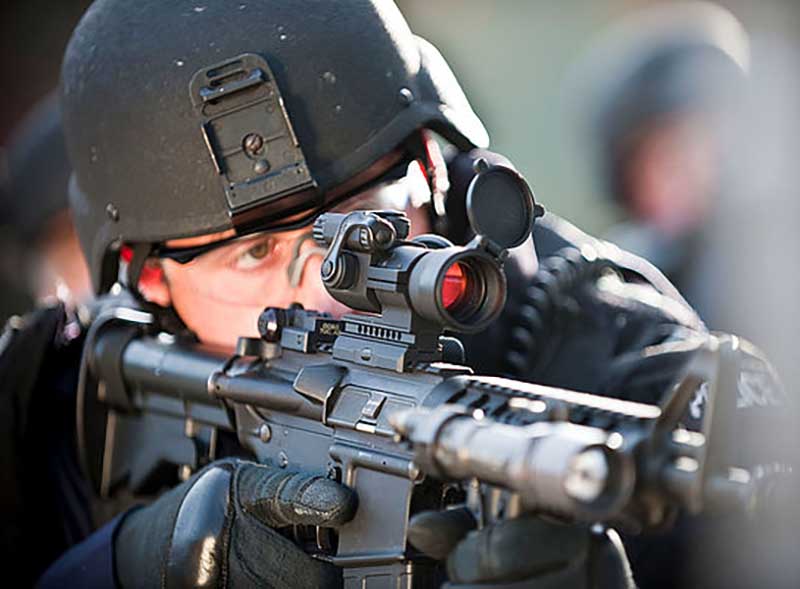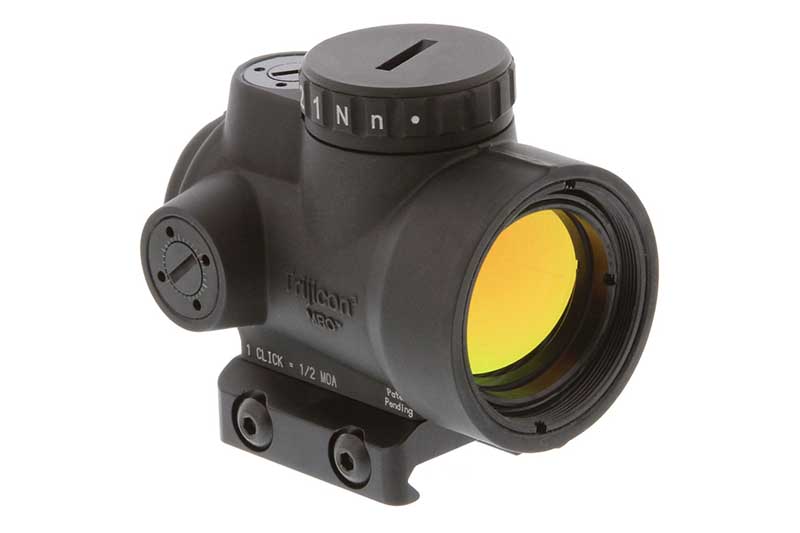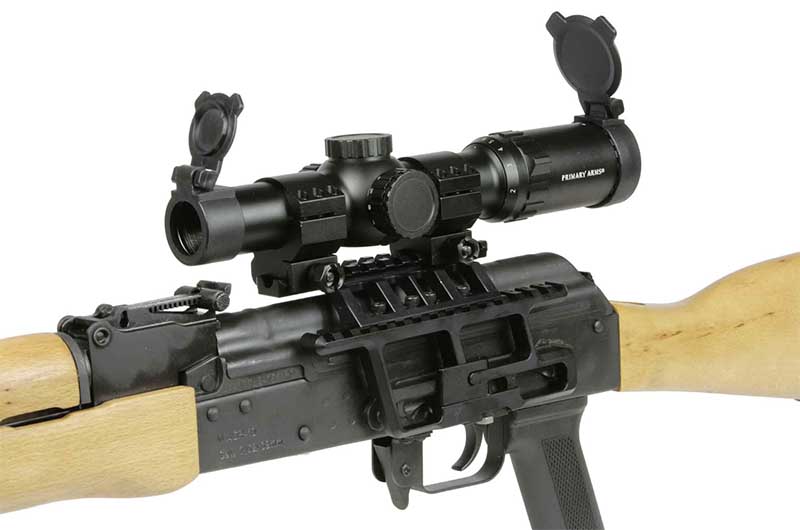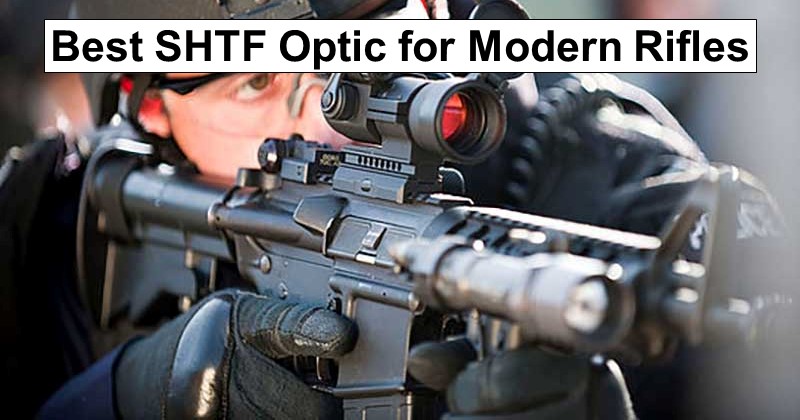
None of us truly know how a SHTF scenario will play out. No one really knows what we will need and what will be worthless. One thing is fairly sure, no matter the scenario, a good rifle will likely be a key component and that rifle will need to be accurate and efficient to conserve ammo. That means an optic is a good choice but which one?
Optics can be broken down into a few categories based on function and broken out further based on intended use and strengths. All optics have a place in the modern arsenal but not all will have the traits needed to make it an appropriate choice for SHTF. That said, this article comes from a one-rifle perspective to determine the single best optic. If you have multiple rifles with decent ammo stockpiles, you may choose several types of optics to meet different needs.
Optic Selection
So, if we pick a single optic, what traits does it need? On what criteria do we choose what is the best overall? There are many considerations but a few are paramount when it comes to a true SHTF scenario.
Versatility
The first and overarching need that any SHTF gear will need is versatility. We don’t know the situation and what we will have available to us when things turn south. We may need to pack up and bug out. We may not be able to take our stockpiles. This should be a part of our weeding out process with all gear and optics are no exception.
This single rifle may need to serve as a hunting tool as well as a weapon for personal defense. Many times, optics can be specifically intended for one of these uses. Though it may be adapted to other uses, it can be hard to break out of specialization. This is especially true of scopes made for hunting which can be overspecialized for our SHTF needs.
The primary culprit of overspecialization is magnification. High magnification scopes are great for long-range shots but have little to no versatility.
Durability
All our SHTF gear may have to perform long term without the possibility of replacement. Repair can be problematic and may require specialized machinery that may not be available to us. All gear, rifle and optics included, needs to be selected based on how long it can withstand hard use in harsh conditions. For optics, this can be a challenge.
The key to durability is to pick products made by solid manufacturers with impeccable standards. They should have a reputation for toughness and durability. Any company that manufactures military-level equipment is a good bet but not the only bet. There is the old adage “buy once, cry once” but in SHTF that one chance to get the right product may be all you get. Make sure you make a good choice.
Considerations for durability are the overall construction and the finer points. At a minimum you want a metallic body that is sealed against moisture and dust. The overall form should be one that lends its self to abuse without breaking. And for your sake, make sure it can handle the stresses of the repeated firing of your chosen caliber.
Longevity
I am choosing this term to represent use and wear on an optic where durability was prevention of damage. The longevity is simply how long it can stand up to use and what other needs it has such as batteries that keep it functioning. It is simply the truth that technology is ingrained in our lives to a level that even our weapons may need to depend on it. SHTF may last a few weeks or years. There is a place in our considerations for the higher-tech options.
Battery life is our number one contender for longevity. We need to make sure we have plenty of spares but technology that uses less power overall and has the greatest battery life are optimal if we have to have batteries. Don’t rule these options out for this reason alone. We will get to that later.
Other issues of longevity are the brass gears in most quality optics. Plastic isn’t going to cut it long term and even brass will wear. Over time this can damage your optic making options that require little adjustment a better bet. This is a minor point but one that should be in your mind when you make a purchase.
Optics Types
With our criteria out of the way, optics can be mainly broken down into red-dot style sights and traditional optics. They can be further broken down from these main categories into more specialized products. Each subsection has their own strengths and weaknesses.
Red Dot Sights

Red dot sights is a generic term often used to describe reflex sights, holo-sights, and prism scopes. Though all function in a similar faction, the way they function and the traits of each can vary significantly. Though most of these use electronics and require batteries, their effectiveness and versatility warrant consideration.
The reflex sight is the most common model of red dot and the one that most of us think when the term red dot is used. These come in two varieties but each functions the same. The difference is in construction and it can be a big difference. Some use a tube style body much like a shorter, standard scope where others are a simple frame style like those often used on pistols.
The benefits of a reflex sight vary between the two and for our purposes, the frame style design is not suitable due to its fragile nature. The tube style sights benefit from better durability, a more simplified function, robust electronics, and exceptional battery life. The latter of these is the primary concern of most people but optics like the Aimpoint have battery life measured in years while others use tritium for lighting that will last for a decade or longer.
The main downfall of these scopes is the lack of magnification in most cases. Some may have a very small amount but not enough for any longer shots. You don’t want much magnification or you lose versatility but the option of a 3x or 4x can be very helpful.
Holographic sights like my beloved EOTech are great choices in general but perhaps not optimal for SHTF. The battery life is lower and the technology more complex. Though I have had the same EOTech for almost 20 years without a hitch, it has been treated well. I would worry if it were to be in a situation where it was banged around much or left in the elements for too long.
Holo-sights are very fast and the battery life isn’t terrible unless compared to a reflex sight. They are a midrange of durability. One of the better traits is the reticle which can be more complex than a standard reflex sight. These are strengths but not ones that would elevate these scopes to the status of ‘best’.
Their downfall is their shape which is more prone to breakage. Couple this with a more complicated set of electronics and you could have some issues. They also lack magnification which is a minor downfall.
Prism sights are not a common option either but they are available and have many of the strengths of both the above sights but are often far more expensive. Like a reflex sight, they can have very long battery life or use tritium to remove the need for batteries at all. They can have more complex reticles than a standard reflex sight. And they are inherently durable in the better-made models.
Unlike the above sights, they also have the option of magnification. Essentially, they remove all of the above negatives but have a couple of their own. The primary negative is the slowness of use of a prism sight. They have eye-relief like a standard scope though it is often longer by a small margin. Some even see the magnification as a negative as they are often not adjustable to no magnification which hinders close-quarters effectiveness.
The overarching negative for these sights is the use of batteries. The need for power is a big consideration. This means you will need to stockpile replacements and carry them with you. Many advances in technology have extended battery life but, with a few exceptions, batteries are needed or the scope does not work.
Traditional Scopes

Though all traditional scopes function by the same principles, they can be broken down by variable power and fixed power models. Each has their strengths. But before we do that, there are some considerations that are universal to both types to meet our criteria above.
The first of these is that power should be limited. Shooting through a 20x scope is a blast but when it comes to versatility a scope that power has almost none. Anything less than 100 yards, which is likely to be your most common need, will be impossible or very difficult at best. Those scopes make locating targets and following them as they move at moderate ranges very, very iffy.
The second is durability overall. A scope that is shockproof, waterproof, and at least fog-resistant is best. It should be made of a 1-piece tube that is sealed to prevent dust and moisture intrusion. The reticle needs to be etched on the glass its self. The internals should use brass or bronze mechanisms for wear resistance. This usually equates to an expensive scope to get one with all of these features. And even with that, alignment is vital in these optics so even a small shift can ruin them.
With those two main points covered, let’s take a closer look at the benefits of a fixed power optic. These have become a rare option but one that can still be found.
The main benefit of a fixed power optic is the simplified function. The alignment of the lenses is set in a more durable way than a variable power optic. It’s simply a more durable setup and the lack of a magnification adjustment means that the focus is more simplified and there are fewer parts that can break.
The downside is that with a set magnification, you lose some versatility. You either pick a low or moderate magnification and that is all you get. In this case less is likely better. Something in the 4x or less range allows you to use the scope close in but extends range an acceptable level. It may not be optimal for some situations but it will give you some benefit for a variety of situations.
For variable power scopes, you have the exact opposite. They are more complex, more prone to alignment issues, and have more parts to wear out. Conversely, they are far more versatile. You can get an optic that has a 1x magnification at the bottom end and goes up to 7x at the top. This would greatly extend range while preserving the majority of close combat needs. If you can get past the durability issue, this could be a good option.
The ‘Best’ Option
While I know my region, weapon system, and expectations, I do not know yours. The information above is presented to show the strengths and weaknesses of various options to help you assess your personal needs and make a decision. Deciding for you is not something that can be easily done and depends greatly on your skills, location, and a variety of other factors. But I am not going to cop out on this!
For my purposes, the reflex sight is the best option. It has the versatility to hunt and defend myself in my location. Magnification is not that important to me as the woodlands where I live doesn’t permit many shots greater than 100 yards and often far less. The batteries are lightweight and easy to stockpile and with my chosen optic, they last for years. For about $50.00, I can purchase enough batteries to last for 20 years. That is far longer than most ammo stockpiles are likely to last.
But one this is certain, with my option and any other above you want a good set of backup iron sights. Things go wrong and even the most durable optics break. Two is one and one is none. My number two option is always a set of good quality metal iron sights. For those interested, my number one is the Aimpoint PRO.
Author Bio:
About Eric Patton
Eric has been an avid hunter and outdoorsman since his childhood in Appalachia. Having spent the majority of his time in various outdoor activities in many regions of the U.S. he has gained an appreciation and insight for the challenges of hunting different environments and game animals. He is an avid archer, fisherman, hunter, and gun enthusiast. Currently he devotes most of his time to education for young hunters and teaching outdoor skills for local scout troops and Search and Rescue orginizations. You can find more article from Eric on https://www.outdoorsbest.com/

Leave a Reply